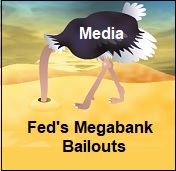-
Recent Posts
- Trump’s “Big Beautiful Bill” Is a Grotesque Giveaway to Fossil Fuel Billionaires While Adding $3.3 Trillion to Nation’s Debt
- Senator Chris Murphy Charges that Trump “Has Opened a Channel for Bribery”
- Congressman Casten: Trump’s Assault on the Rule of Law Is Causing Capital Flight Out of U.S. by Foreign Investors
- Trump’s Approval Rating Drops to 80-Year Low; IMF Says U.S. Tariffs Now Exceed the Highs During the Great Depression
- Nasdaq Has Lost More than 3,000 Points Since Trump’s First Full Day in Office in 2025; the Pain Has Barely Begun
- The Bond Crisis Last Week Was a Global No-Confidence Vote in U. S. President Donald Trump
- Trump’s Tariff Plan Guts $5 Trillion in Stock Value in Two Days; Senator Warren Calls for Emergency Action Before Markets Open on Monday
- Trump’s Attacks on Big Law, Universities, and the Media Have a Common Goal: Silence Dissent Against Authoritarian Rule
- Trump Administration Gives All Clear to Laundering Money through Shell Companies and Bribing Foreign Officials
- Four Megabanks on Wall Street Hold $3.2 Trillion in Uninsured Deposits – Which May Explain Senator Schumer’s Pivot to the GOP to Stop a Government Shutdown
- Here’s What Came Crashing Down Yesterday for Trump’s “Genius” Guy, Elon Musk: Tesla Stock, Access to Twitter (X), His Years of Secret Calls with Putin
- After Banning the Associated Press, Trump Is Now Targeting Specific Journalists That He Wants to See Fired
- Closely Watched Atlanta Fed Model Predicts Negative U.S. Growth in First Quarter
- Trump’s Gangster Diplomacy Makes Front Page Headlines Around the Globe
- Who Benefits Alongside Elon Musk If He Succeeds in Killing the CFPB: the Megabanks on Wall Street that Underwrite His Tesla Stock Offerings
- In Trump 1.0, the State Department Used Taxpayer Money to Publish a Book Elevating Elon Musk to a Superhero; It Was Funded by USAID, the Agency Musk Wants to Quickly Shut Down
- News Host Joy Reid Raises Threat of Trump Selling U.S. to Putin; Ten Days Later Her Show Is Cancelled
- Elon Musk’s DOGE Appears to Be Violating a Court Order; It Has Taken Down Hundreds of YouTube Videos that Educate Americans on How to Avoid Being Swindled
- Barron’s Releases Audio of Jamie Dimon Cursing Out His Workers at a Town Hall, as Dimon Plans to Dump Another One Million JPM Shares
- There’s One Federal Investigative Agency that Neither Trump nor Elon Musk Can Touch: It Just Opened an Investigation into DOGE
- Elon Musk’s Companies Were Under Investigation by Five Inspectors General When the Trump Administration Fired Them and Made Musk the Investigator
- Donald Trump Gives the Greenlight to Goldman Sachs and JPMorgan Chase to Return to Bribing Foreign Officials
- After Tech Geeks Built a Back Door to Loot Billions from FTX, Republicans Refuse to Investigate What Elon Musk’s Tech-Squad Did Inside the U.S. Treasury’s Payment System
- Former Prosecutor, Now U.S. Senator, Informs Tesla That CEO Musk May Be Violating Federal Law and to “Preserve All Records”
- Trump’s Hedge Fund Guy Is Now Overseeing the U.S. Treasury, IRS, OCC, U.S. Mint, FinCEN, F-SOC, and the Consumer Financial Protection Bureau
- As Elon Musk Begins Shutting Down Payments to Federal Contractors, a Strange Money Trail Emerges to His Operatives Inside the U.S. Treasury’s Payment System
- JPMorgan Chase Charged by Yet Another Internal Whistleblower with Cooking the Books
- We Asked Google’s AI Search Model, Gemini, Questions About the Fed and Wall Street Megabanks: It Got the Answers Dead Wrong
- With Trump and Melania’s Crypto Coins Likely to Raise Legal Challenges, Why Didn’t Trump Fire the SEC’s Inspector General in His Purge of IGs?
- Fossil Fuel Industry Could End Up Paying Tens of Billions for LA Wildfires and Deceiving the Public on Climate Change for Decades
- It’s Being Called the Biggest Grift by a President in U.S. History: Trump and First Lady Launch their Own Crypto Coins
- Trump Plans to Install a Fracking CEO to Head the Energy Department and Declare a National Emergency on Energy to Gain Vast Powers
- Fossil Fuel Money Played a Role in the Los Angeles Fires and the Push to Install Pete Hegseth as Secretary of Defense
- When It Comes to Wealth Retention in Retirement, Concrete May Be the New Gold
- Wall Street Watchdog Warns “Clock Is Ticking on a Coming Catastrophic Financial Crash”
- Wall Street Is Sending the Same Message to Americans on Fossil Fuel Financing that It Sent on Cigarettes: Drop Dead
- In a Six-Week Span, this Dark Pool with a Curious Past Traded 3.7 Billion Shares
- Wall Street’s Lobby Firm Hired Eugene Scalia of Gibson Dunn to Sue the Fed for Jamie Dimon
- Postmaster General Louis DeJoy Made $561,051 in Compensation in 2024, as Mail Costs Spiked and Delivery Deteriorated
- Fed Chair Jay Powell Sends a Bold Message to Trump and Tanks the Dow by 1123 Points
- The Head of Fixed Income at T. Rowe Price Makes the Scary Case for the 10-Year Treasury to Spike to 6 Percent
- $663 Billion in Cash Assets Have Gone Poof at the Largest U.S. Banks
- Donald Trump to Ring Bell at New York Stock Exchange Today as Hit List Posters Appear in Manhattan Targeting Wall Street CEOs
- Trump Has a Slush Fund to Prop Up the Dollar – Will He Use It to Prop Up Bitcoin Instead?
- A CEO Assassination; a Billionaire Heiress/NYPD Commissioner; a Secret Wall Street Spy Center – Here’s How They’re Connected
- Despite More than 1600 Tech Scientists Signing a Letter Calling Crypto a Sham, Trump Names a Crypto Cheerleader for SEC Chair
- The Fed Rings a Warning Bell: Hedge Funds and Life Insurers Are Reporting Historic Leverage
- Trump’s Nominee for FBI Director, Kash Patel, Has Businesses Financially Intertwined with Trump
- Donald Trump Is at Risk of Getting Named in a Fossil Fuels Conspiracy Lawsuit
- Trump Is Having Difficulty Getting a Lawyer to Accept the Nomination for SEC Chair: Here’s Why
Search Results for: Federal Reserve
President Dow: A Hard Look at Trump’s Threat of an Epic Market Crash if He’s Not Reelected

By Pam Martens and Russ Martens: June 18, 2019 ~ President Donald Trump has now tied his campaign, and himself, up in ticker tape. On June 15 the sitting President of the United States Tweeted the following message: “The Trump Economy is setting records, and has a long way up to go….However, if anyone but me takes over in 2020 (I know the competition very well), there will be a Market Crash the likes of which has not been seen before! KEEP AMERICA GREAT” First, since the stock market lost 90 percent of its value from 1929 to 1932 and the President is calling for “a Market Crash the likes of which has not been seen before,” he is effectively predicting that the stock market will lose 91 percent or more of its value. (Even for raging bears, that’s quite a stretch.) But since it’s the billionaires and multi-millionaires who … Continue reading
There’s a Critical National Interest in Cleaning Up the Corrupt Stock Market Structure
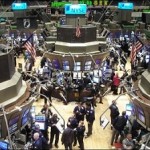
By Pam Martens and Russ Martens: June 17, 2019 ~ U.S. stock markets have historically been challenged by corrupt actors. But there have been two extreme periods of corruption in the history of U.S. stock markets. One period occurred in the lead up to the 1929 stock market crash when Wall Street cartels were forming pools to wildly manipulate stock prices. That period led to an economic calamity known as the Great Depression. It also led to two years of intense hearings in the U.S. Senate to investigate the structure of the stock market, followed by intense legislative reforms including the Glass-Steagall Act, the Securities Act of 1933 and the Securities Exchange Act of 1934. The second period was the lead up to the 2008 stock market crash which led to the economic collapse known as the Great Recession. In that period, like 1929, Wall Street banks were allowed to … Continue reading
These Charts Suggest the Whole Wall Street Casino Has Become Taxpayer-Backstopped and Too-Big-to-Fail

By Pam Martens and Russ Martens: June 14, 2019 ~ According to the Federal Deposit Insurance Corporation (FDIC), as of September 30, 2018 there was a total of $13.6 trillion in deposits at all 5,397 Federally insured banking and savings institutions in the U.S. but just nine mega banks represented 40 percent of all domestic deposits. Those nine are the insured banking units of the holding company for JPMorgan Chase with $1.3 trillion in domestic deposits; Bank of America at $1.36 trillion; Wells Fargo with $1.27 trillion; Citigroup at $504 billion; U.S. Bancorp $314 billion; Morgan Stanley $181 billion; BB&T $161 billion; Goldman Sachs $130 billion; and State Street $108 billion. Unfortunately, the FDIC’s Deposit Insurance Fund had only $100.2 billion as of September 30, 2018 to cover losses should any of those trillion-dollar-banks fail – which means they can’t fail and have thus become known as too-big-to-fail, even as they continue to take … Continue reading
These Charts Show Why the Next Generation Will Pay for the Wall Street Bailout of 2007-2010
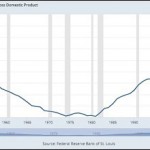
By Pam Martens and Russ Martens: June 12, 2019 ~ The two greatest stock market crashes that triggered deep economic upheaval in the U.S. occurred from 1929 to 1932 and from 2008 to 2009. There has long been a debate as to why the 1929 crash was followed by a Great Depression while the 2008 epic crash, which took down century-old iconic names on Wall Street along with the U.S. housing market and labor market, was followed by a less severe Great Recession. Another debate about those two periods is why the stock market, as measured by the Dow Jones Industrial Average, took a quarter-century to regain the peak it had set in 1929 while the stock market returned to the peak it had set in 2007 just six years later. (See charts below.) We believe the answer is found in one word – debt. On January 1, 1939, after … Continue reading
Beware of the Junk Bond (High Yield) Market
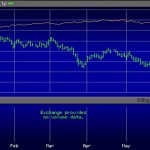
By Pam Martens and Russ Martens: June 10, 2019 ~ On Friday markets digested the nonfarm payrolls report from the U.S. Labor Department showing a weak job growth in May of just 75,000. That news adds to a myriad of other economic data, including a slowdown in durable goods orders, that suggest a deceleration of the U.S. economy. The Atlanta Fed’s closely watched GDPNow indicator is showing a very weak 1.4 percent forecast for the second quarter of this year. The 10-year U.S. Treasury note has duly noted the deceleration in the economy and has fallen from a yield of 2.9 percent since the middle of December to 2.08 percent at Friday’s close. The yield of the U.S. Treasury has an inverse relationship to its price. That is, as the market value of the Treasury note rises, the yield declines. Thus, as the perception grows that the U.S. economy is … Continue reading
The Fed’s Glue-Sniffing Announcement Yesterday Involving JPMorgan Chase

By Pam Martens and Russ Martens: June 7, 2019 ~ Federal Reserve inspectors appear to be on some kind of mind-altering drug or their superiors are simply taking their marching orders from Wall Street cronies in the Trump Administration. Yesterday the Fed released a terse 104-word statement indicating that the largest and serially charged bank in the U.S., JPMorgan Chase, had shown “evidence of substantial improvements” in its “risk-management program and internal audit functions” and the Fed was therefore removing the dog collar it had put on the bank in January 2013. (JPMorgan Chase had been required to provide written progress reports to the New York Fed in 2013 until further notice – which became six years.) The Fed’s actions in 2013 stemmed from JPMorgan Chase secretly gambling with depositors’ money in exotic derivatives in London and losing at least $6.2 billion of those funds. The incident became infamously known … Continue reading
Yesterday’s Market Rally Was a Short Squeeze, Not a Reaction to Powell’s Speech
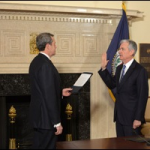
By Pam Martens and Russ Martens: June 5, 2019 ~ It felt like headline writers were out to engineer a stock market rally yesterday by scaring hedge funds that had shorted the market to the tune of tens of billions of dollars. When traders who are short the market act simultaneously on breaking news, (news that suggests the stock market is going to rally), by buying back stock to close out their short positions, that causes a big upward spike in the stock market. In Wall Street parlance, it’s called a short squeeze. It happens a lot in a secular bear market and is a head fake to investors desperately looking for a bullish trend. A number of major business publications put a bullish spin on what the Chair of the Federal Reserve, Jerome Powell, actually said in his opening remarks yesterday morning at a conference sponsored by the Federal … Continue reading
Mnuchin’s Dangerous Plan to Deregulate Wall Street Is Captured in this Chart
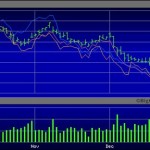
By Pam Martens and Russ Martens: June 3, 2019 ~ U.S. Treasury Secretary Steve Mnuchin (a/k/a the former foreclosure king) has been attempting to dismantle regulatory restraints on Wall Street’s worst instincts since he took office. Making Mnuchin even more dangerous is the fact that, under statute, he simultaneously sits as head of the Financial Stability Oversight Council (F-SOC) even as he appears to be attempting to undermine financial stability in the U.S. One of Mnuchin’s most alarming actions on behalf of F-SOC came last October 17 when the Council announced that it was removing the designation of Prudential Financial as a SIFI – a Systemically Important Financial Institution that required enhanced supervision and prudential standards. Mnuchin stated at the time: “The Council’s decision today follows extensive engagement with the company and a detailed analysis showing that there is not a significant risk that the company could pose a threat … Continue reading
Two Key Execs at New York Fed Head for the Exits – Two Business Days After Sharp Cut in GDP Estimate
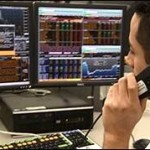
By Pam Martens and Russ Martens: May 28, 2019 ~ Simon Potter, who runs the Federal Reserve’s open market operations at the Federal Reserve Bank of New York, is stepping down at the end of this week, as is Richard Dzina, head of the New York Fed’s Financial Services Group. Wall Street is buzzing over the fact that the two are long-tenured executives at the New York Fed; are exiting simultaneously, and with only a four-day notice to the public and the markets – suggesting that their departure may not have been voluntary. The praise lavished on the pair in the press release issued today by John Williams, President of the New York Fed, also suggests that an effort is being made to soften the blow of their surprise departure. Potter is responsible for carrying out the monetary policy mandate of the Federal Open Market Committee (FOMC) by supervising the … Continue reading
Market Sends Scary Signals; Atlanta Fed’s GDPNow Forecasts Anemic 1.3% Growth
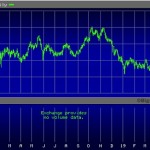
By Pam Martens and Russ Martens: May 24, 2019 ~ Most stock owners of J.C. Penney never thought they’d see the day when it traded as a penny stock. But that’s what happened yesterday when shares of the large retailer closed at 91 cents, a loss of 9.79 percent on the day. The macro picture is that J.C. Penney employs 95,000 people and operates 864 stores across the United States. Its future will have an impact on jobs and commercial real estate prices in the United States. At 91 cents a share, those prospects aren’t looking too good right now. The broader markets fared better than J.C. Penney yesterday but were, nonetheless, a sea of red. After being down more than 400 points intraday, the Dow Jones Industrial Average closed with a loss of 286 points or 1.11 percent at 25,490. The Nasdaq, laden with tech losers, lost 122.5 points … Continue reading

